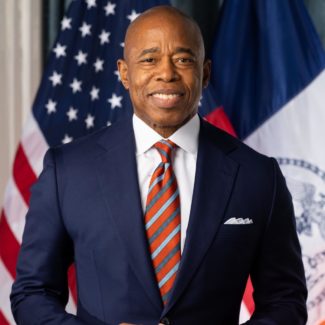
Mayor Eric Adams. Photo Credit: facebook.com/NYCMayor
On August 9, 2024, New York City Mayor Eric Adams and other critical stakeholders celebrated major milestones reached by the Street Homelessness Advocacy Project (SHAP) within the first two years of the program.
This program supports unhoused New Yorkers by training volunteers, some who have personally experienced housing insecurity, to advocate and offer services to this community. Within the first year of the program, one of three unhoused individuals New Yorkers who encountered project workers voluntarily left the streets. During the second year of the program, approximately one of two people who experienced homelessness, 223 out of 451 individuals, received a referral or placement with a supportive program, a nearly 50 percent rate of success. Between year one and two, almost 50 percent of homeless New Yorkers who encountered project workers accepted a form of supportive programming.
Those interested in becoming a volunteer may visit the Street Homelessness Advocacy Project website or email shapnewyorkcity@gmail.com. New Yorker’s may call 311 or file a report through the 311 app to alert the City of anyone who may benefit from this program.
Other initiatives the Adams administration has implemented to reduce the homeless population in New York City include the City Fighting Homelessness and Eviction Prevention Supplement (CityFHEPS). These programs utilize housing vouchers to transition homeless New Yorkers into permanently-affordable housing.
New York City Mayor Eric Adams said, “Thanks to the Street Homelessness Advocacy Project, everyday New Yorkers are answering the call to volunteer and lend a helping hand to their neighbors in need, and their good work is paying off, with nearly 50 percent of homeless individuals connecting with SHAP choosing to voluntarily come off our streets. Solving our homelessness crisis requires each and every one of us to follow in the footsteps of SHAP volunteers by treating those experiencing homelessness with dignity and humanity.”
Deputy Mayor for Health and Human Services Anne Williams-Isom said, “Since the start of our administration, we said that we would no longer walk past our brothers and sisters in need without extending support. SHAP is one way we are actualizing that commitment. The model shows that we can all play a role in connecting with our fellow New Yorkers and, when we do, roughly one out of two people are now voluntarily connecting to supportive programs. We also know that homelessness is a housing challenge. That is why our administration has connected more people than ever to CityFHEPS and we are building more affordable housing in the months and years to come.”
By: Chelsea Ramjeawan (Chelsea is the CityLaw intern and a New York Law School student, Class of 2025.)

